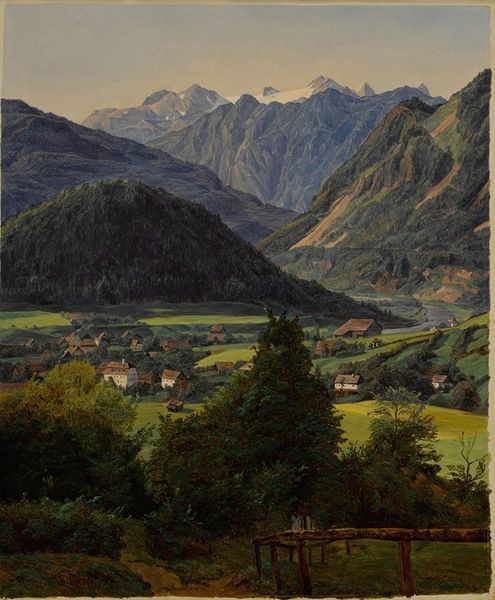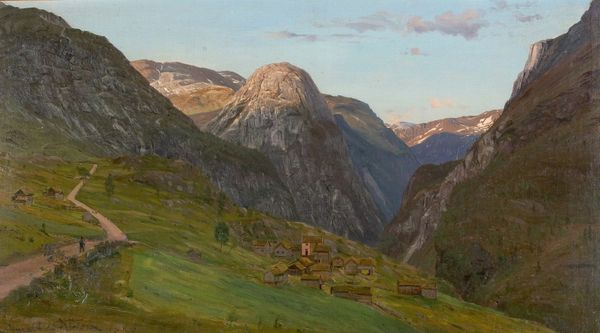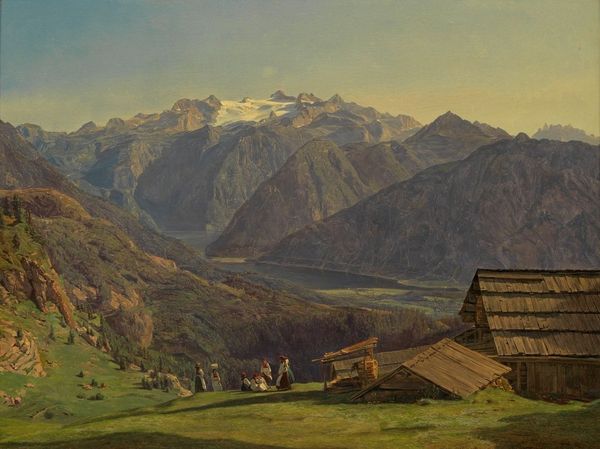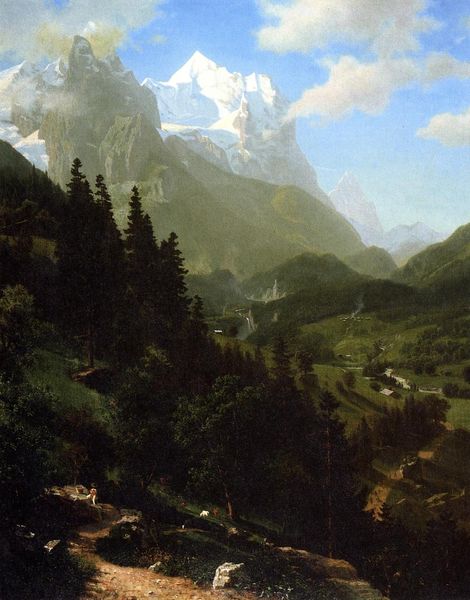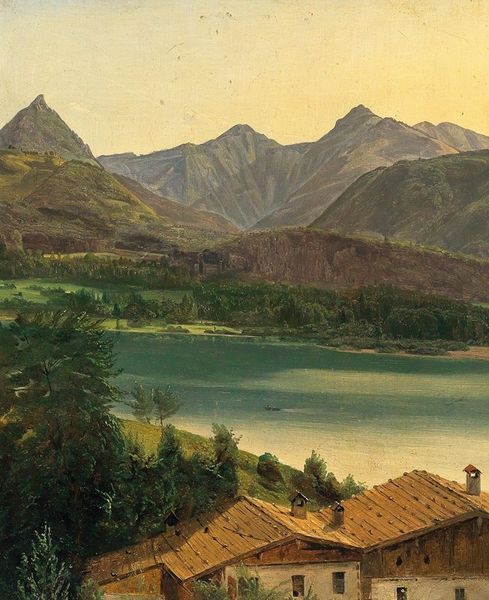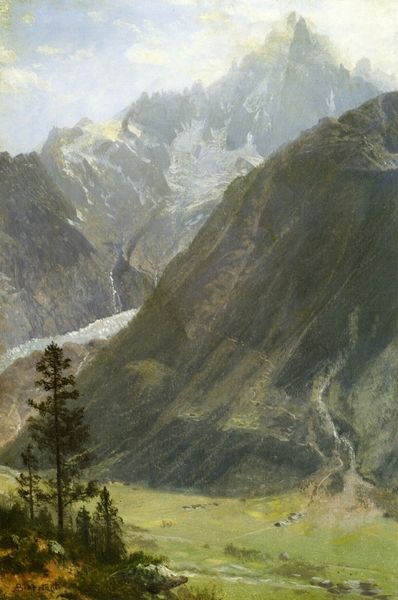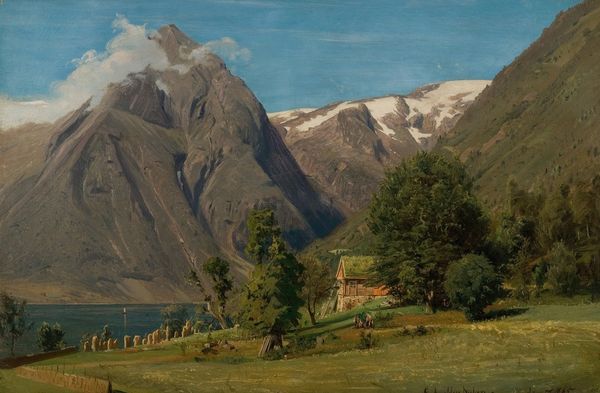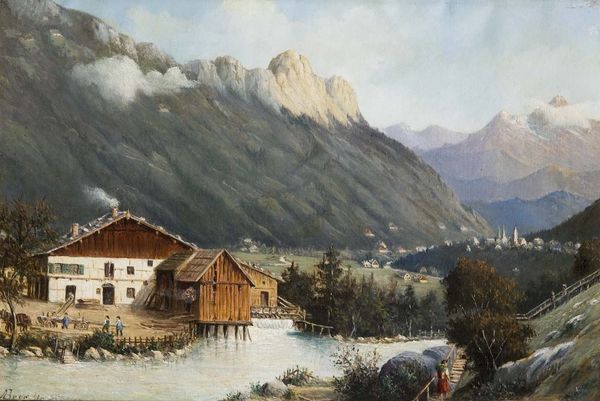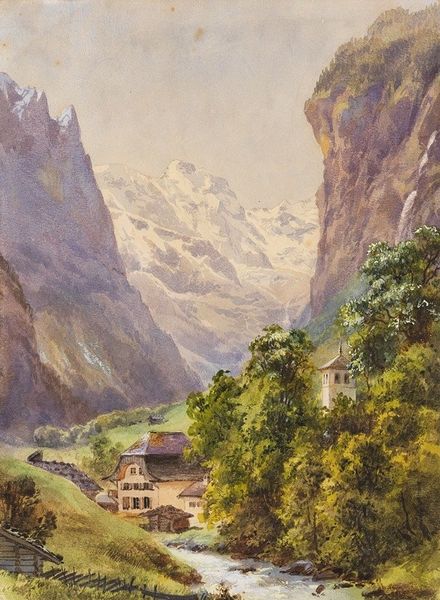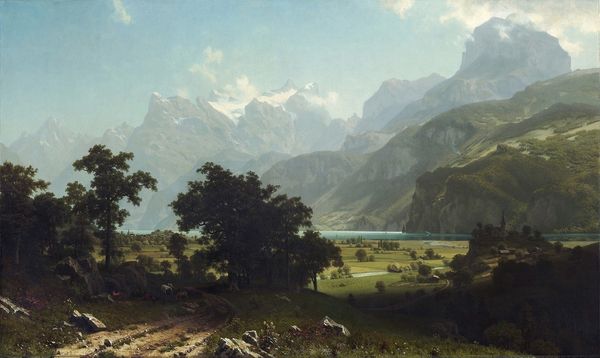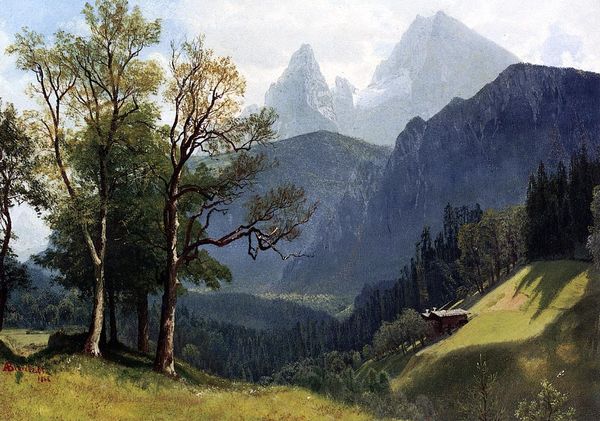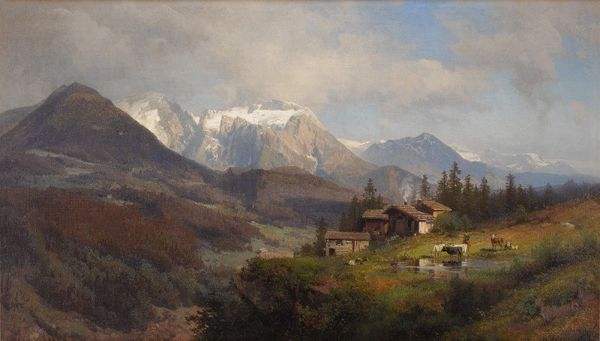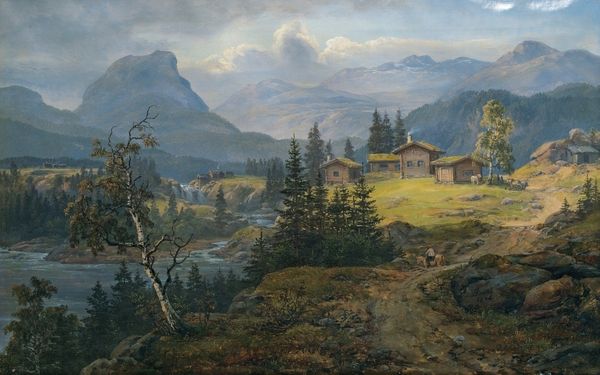
tempera, painting, oil-paint
#
tempera
#
painting
#
countryside
#
oil-paint
#
landscape
#
figuration
#
nature
#
oil painting
#
classicism
#
romanticism
#
sublime
#
realism
Copyright: Public Domain: Artvee
Curator: This is Ferdinand Georg Waldmüller’s "Der Dachstein vom Sophien-Doppelblick bei Ischl," created around 1835. The artwork is oil on canvas. Editor: It's so serene. The composition immediately draws you into the valley, and then upward toward those majestic, snow-capped peaks. There's a feeling of expansiveness, but also of enclosure within the mountains' embrace. Curator: Waldmüller was deeply invested in representing nature realistically, diverging somewhat from the prevailing Romantic trends of idealization. He was interested in communicating his knowledge about a sense of place to the public through art. Editor: Absolutely, though the very act of "representing" nature is always political, isn't it? The idea of a sublime and pure nature often masks histories of land ownership, displacement, and even exploitation. Ischl, after all, was a popular resort for the Austrian elite, including Emperor Franz Joseph. The painting omits, shall we say, the less picturesque realities. Curator: Indeed. Waldmüller's paintings also circulated widely through engravings, solidifying his imagery into the visual culture of the Austrian Empire. His realism did, though, present a direct, accessible depiction of the landscape to the masses, encouraging different sectors of society to understand and identify with a territory. Editor: The careful attention to detail really invites the viewer to observe, perhaps even to project themselves into this pastoral scene. I’m also struck by the subtle light, almost reverential in how it touches the mountaintops. Curator: He meticulously studied the effects of light and atmosphere outdoors. Note, for instance, the sharp focus on the foreground vegetation which progressively softens to an atmospheric haze in the distance. This was an innovative approach to create the sense of depth. Editor: Knowing Ischl's imperial connections, it’s tempting to see the sublime natural world also as an expression of power. But that's precisely why art history is so compelling, to ask uncomfortable questions and consider multiple perspectives. Curator: Well, in his own time, Waldmüller’s techniques were actually criticized by the Viennese Academy. They saw his methods as too radical, insufficiently focused on classical ideals. Editor: It highlights how art isn't just about what's depicted, but also how, and the forces shaping those choices. These historical landscapes are never just passive views. They're cultural products imbued with the complexities of their moment. Curator: I will carry that idea forward with me! Thank you. Editor: Me too. And it inspires me to reflect further about our own present landscapes and who they benefit.
Comments
No comments
Be the first to comment and join the conversation on the ultimate creative platform.
